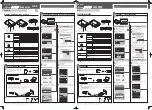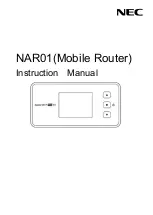
Glossary
GL-2
Cisco Aironet 1240AG Series Access Point Hardware Installation Guide
OL-8371-05
B
beacon
A wireless LAN packet that signals the availability and presence of the wireless
device. Beacon packets are sent by access points and base stations; however,
client radio cards send beacons when operating in computer to computer (Ad
Hoc) mode.
BOOTP
Boot Protocol. A protocol used for the static assignment of IP addresses to
devices on the network.
BPSK
Binary phase shift keying is a modulation technique used by IEEE
802.11b-compliant wireless LANs for transmission at 1 Mbps.
broadcast packet
A single data message (packet) sent to all addresses on the same subnet.
C
CCK
Complementary Code Keying. A modulation technique used by IEEE
802.11b-compliant wireless LANs for transmission at 5.5 and 11 Mbps.
CCKM
Cisco Centralized Key Management. Using CCKM, authenticated client devices
can roam from one access point to another without any perceptible delay during
reassociation. An access point on your network provides wireless domain
services (WDS) and creates a cache of security credentials for CCKM-enabled
client devices on the subnet. The WDS access point's cache of credentials
dramatically reduces the time required for reassociation when a CCKM-enabled
client device roams to a new access point.
cell
The area of radio range or coverage in which the
wireless devices can
communicate with the base station. The size of the cell depends upon the speed
of the transmission, the type of antenna used, and the physical environment, as
well as other factors.
client
A radio device that uses the services of an Access Point to communicate
wirelessly with other devices on a local area network.
CSMA
Carrier sense multiple access. A wireless LAN media access method specified
by the IEEE 802.11 specification.
D
data rates
The range of data transmission rates supported by a device. Data rates are
measured in megabits per second (Mbps).
dBi
A ratio of decibels to an isotropic antenna that is commonly used to measure
antenna gain. The greater the dBi value, the higher the gain, and the more acute
the angle of coverage.
DFS
Dynamic Frequency Selection. In some regulatory domains, 5-GHz radios are
required to use DFS to avoid interfering with radar signals.









































